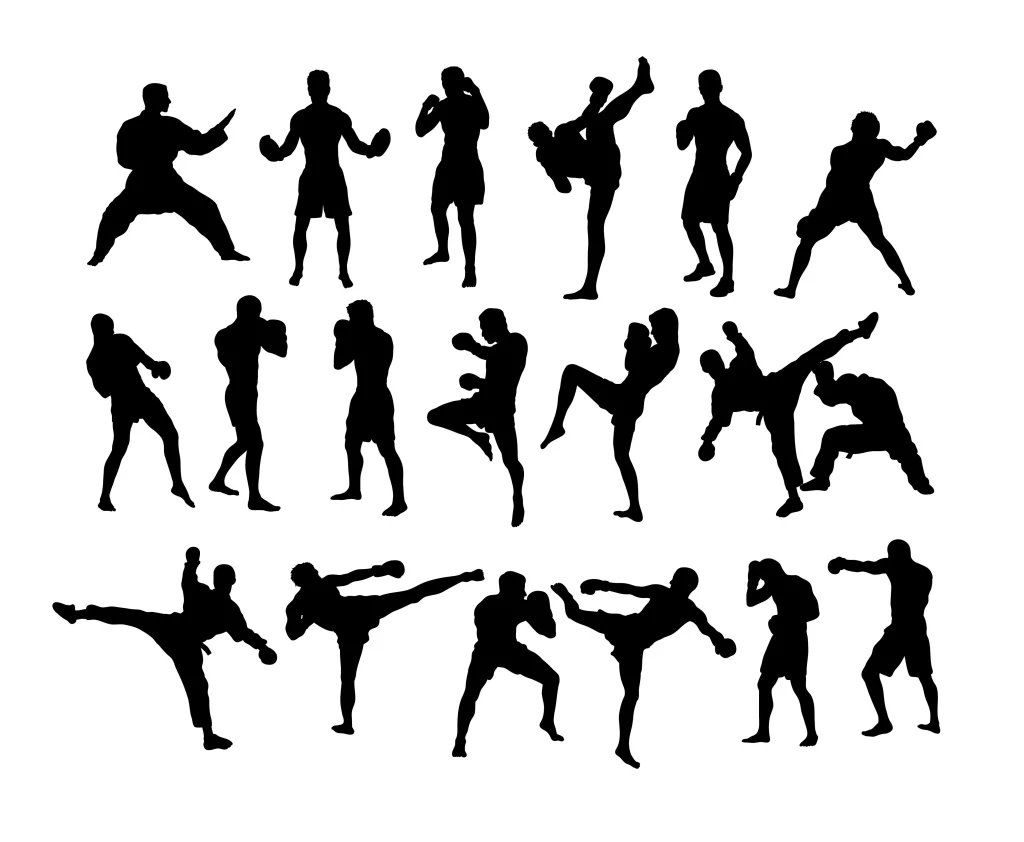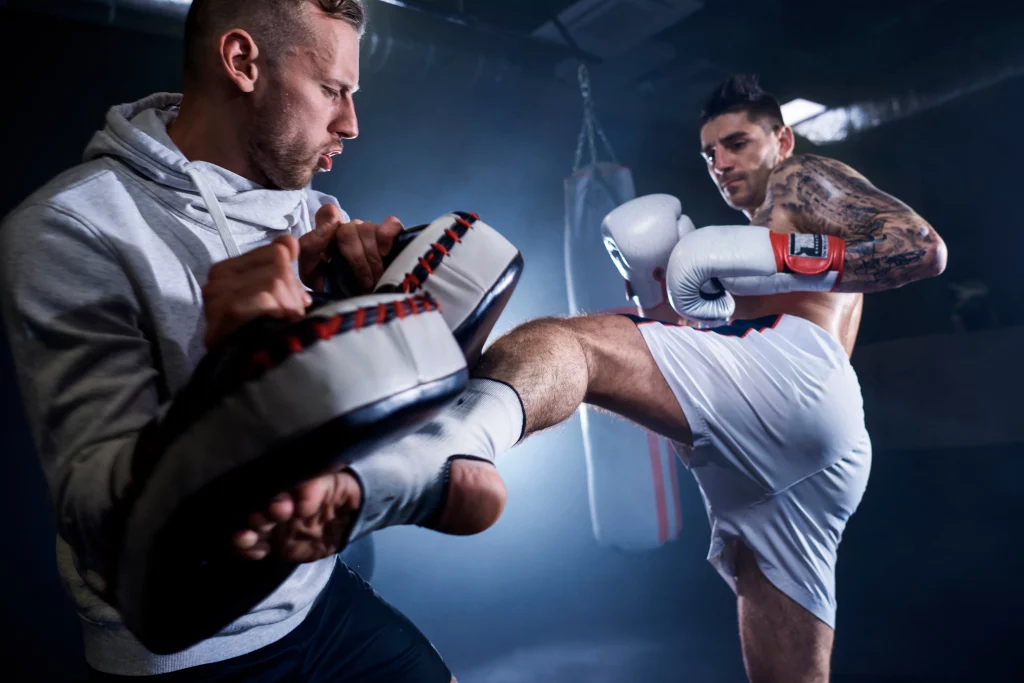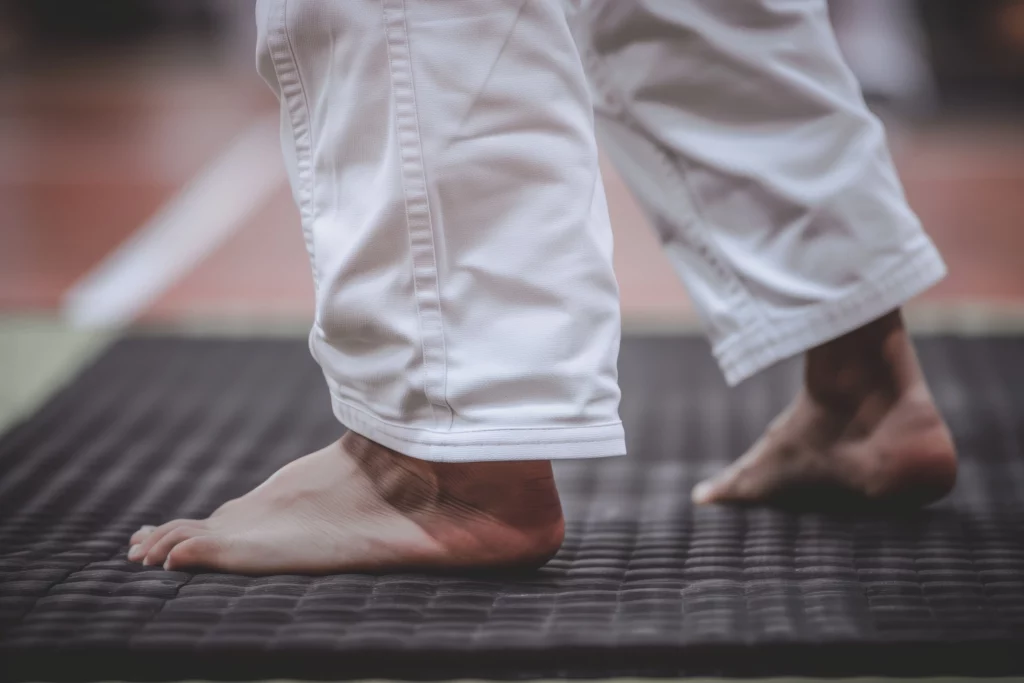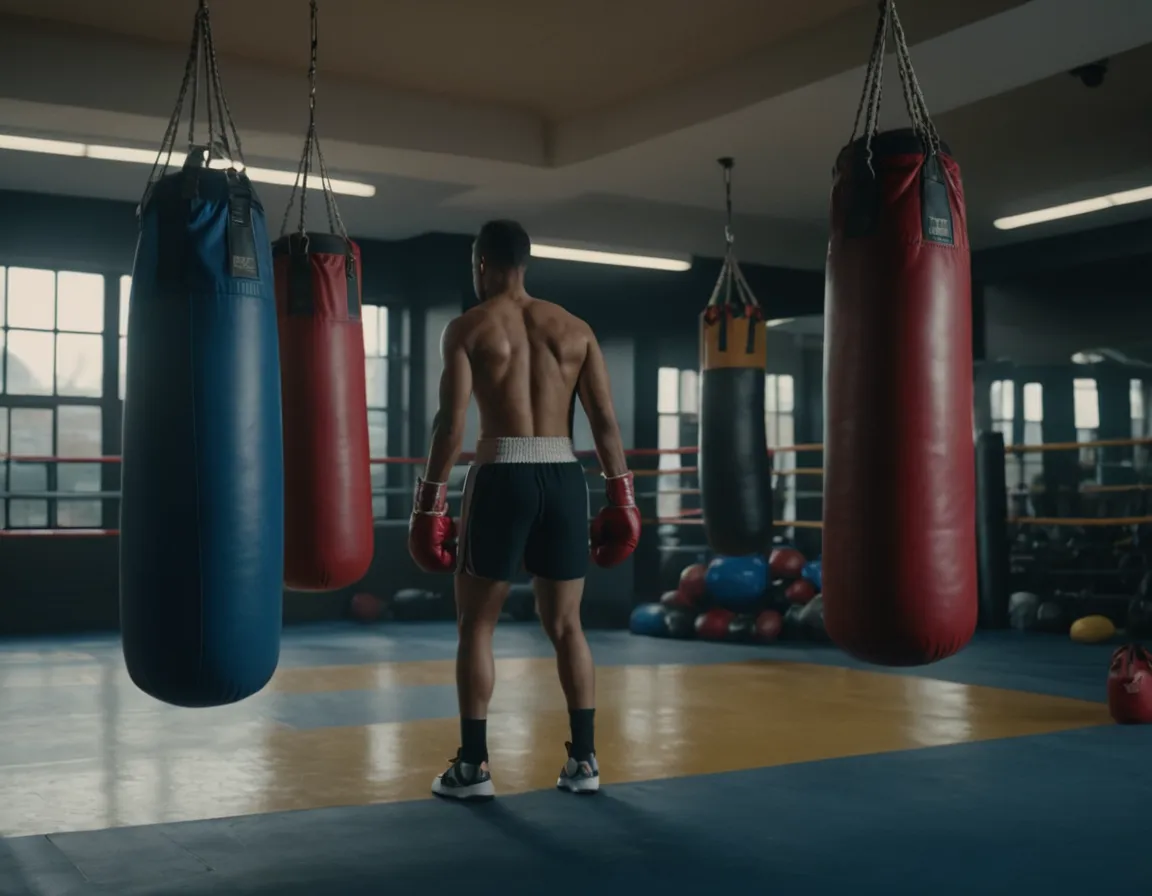Kickboxing: A Complete Guide from History to Advanced Techniques
The Kickboxing, with its deep roots in martial arts and boxing, is much more than a sport: it is a discipline that challenges body and mind, offering benefits that go beyond simple physical fitness. This complete guide will take you to discover Kickboxing, starting from its fascinating history, crossing the fundamental rules, L'necessary equipment, the basic and advanced techniques, until reaching combat strategies and at different types of training.
Content index
Brief history of Kickboxing
Asian origins and Western evolution
The Kickboxing has roots that are intertwined with the history of Eastern martial arts and Western boxing, emerging as a discipline in its own right during the 20th century.
The birth of modern Kickboxing can be traced back to Japan of the 60s, when fights that combined the kicking techniques of martial arts with the rules of boxing began to be organized. These early events were the fertile ground from which Kickboxing began to spread, first across Asia and then to the rest of the world.
The boom of the 70s and global diffusion
In the United States, The Kickboxing gained popularity in the 1970s, thanks to the influence of charismatic figures such as Bruce Lee, which promoted an open and integrated approach to martial arts. Lee, with his Jeet Kune Do, he emphasized the importance of adapting various fighting techniques to create a personal and effective fighting style.
At the same time, in Europe, the Kickboxing developed by incorporating elements from disciplines such as Muay Thai, the French Savate and other fighting styles, further enriching the technical variety of the sport.
Today, the Kickboxing is recognized not only as a combat sport, but also as an effective discipline for fitness and self-defense, practiced by millions of people around the world. International Kickboxing competitions, such as those organized by World Association of Kickboxing Organizations (WAKO), testify to the large following and profound cultural impact of this sport.

Kickboxing Rules
COMPETITION AREA
The competition ring measures 8 x 8 metres, and in some cases 6 x 6.
THE FOUR DISCIPLINES
Kick Boxing is recognized in four different specialties:
- SEMI-CONTACT KICK BOXING
- LIGHT-CONTACT KICK BOXING
- FULL CONTACT KICK BOXING
- LOW-KICK KICK BOXING
The four different specialties have techniques in common:
- Power
- Precision
- Speed
- Check
Each technique presupposes that the permitted targets are hit and the correct execution of the gesture earns the competitor a point.

SEMI-CONTACT
It's live heir to the Karat competitionsand, because, here too, the fight is suspended every time a contender lands a valid blow.
There duration average of the match is two rounds. The physical contact is light, and the victory is almost always on points. In this specialty, jumping blows and kicks to the face are preferred.
LIGHT-CONTACT
Light-Contact is the prelude to full contact combat. The meeting is done according to a precision criterion And spectacularity of shots. It's the fight of the so-called touched, that is, a precise but not powerful technique. It is difficult to witness one victory by knockout.
FULL CONTACT
He's the type of tougher fight And strict.
Those who opt for this specialty are usually athletes in possession of a good od excellent boxing technique, joint flexibility and strong athletic resistance to effort. Unlike other specialties, in this one yes try to make your opponent land on the mator.
LOW-KICK
It is a variant of Full-Contact with freedom to kick your ankles.

Structure of the meetings
A a match is typically divided into rounds, the duration of which can vary from one discipline to another, but is generally 2-3 minutes each, with rest breaks between one round and another. The victories can be achieved by knockout (knockout), TKO (technical knockout, when the referee interrupts the match to protect the safety of a fighter), judges' decision (scoring based on the effectiveness of the blows, control of the ring, aggression and defense) or disqualification of the opponent.
Permitted and prohibited techniques
Permitted techniques include a vrod range of kicks and punches, with specific restrictions on low blows, blows to the back of the head or neck, and attacks on the legs or genitals, which are generally prohibited. Some rules allow the use of knee strikes and clinch techniques (as in Muay Thai), while others are limited to punches and kicks (like in Semi-contact Kickboxing).
There safety of the combatants is of utmost importance, and the rules are strictly applied to minimize the risk of accidents. Referees and judges monitor the match to ensure that techniques are performed correctly and that the rules are respected, intervening when necessary to maintain a safe and fair competition environment.

Equipment needed for Kickboxing
Personal protections
For those who practice Kickboxing, have the right personal protections is crucial to minimize the risk of injuries during training and competitions. The essential protections include:
- Kickboxing Gloves: Vital for safeguarding hands and wrists, these gloves vary in weight and design depending on the athlete's experience and weight category.
- Shin guards: Essential for protecting the shins from the impacts of kicks, they play a key role in the prevention of leg injuries.
- Mouthguard: A fundamental element for the protection of teeth, gums and jaw, the mouthguard is an almost universal requirement in competitions and highly recommended during practice.
- Protective helmet: Mainly used in training phases and amateur tournaments to avoid head injuries.
- Protective shell: Indispensable for protecting the male genital organs, with variants specifically designed for female practitioners too.
Training equipment
In addition to personal protection, theKickboxing training uses various specific equipment, aimed at enhancing the performance and safety of athletes:
- Hand bandages or wraps: Used to provide additional support to wrist and finger joints, offering additional protection under gloves.
- Kickboxing Shoes: Although many athletes prefer to train barefoot, there are shoes designed specifically for Kickboxing that provide support and grip on various training surfaces.
This carefully selected assortment of equipment not only protects athletes from possible injuries but also enriches the quality of training, allowing you to fully concentrate on improving techniques and developing strategies.

Kickboxing techniques
Basic punches and kicks
In Kickboxing, combat effectiveness is based on the ability to master a series of punches and kicks, inherited from both boxing and martial arts. Among the main punches we find:
- Direct: A quick, direct strike towards the opponent, aimed at the face or body.
- Jab: Similar to direct, but used primarily as a measuring technique or to create openings.
- Crosses: A powerful punch thrown with the back hand, crossing the center line of the body.
- Hook (Hook): A curved strike aimed at the opponent's sides, effective at short range.
- Uppercut: An upward strike aimed at the opponent's chin or body.
As for kicks, kickboxers make use of:
- Front Kicks: They hit the opponent head-on, useful for maintaining distance.
- Side Kicks: Powerful and targeted to the sides, ideal for precise shots.
- Roundhouse Kicks: Among the most common, wide-ranging, effective on the body or head.
- Low Kicks: Target your opponent's legs to undermine their stability.
- High Kicks: Spectacular headshots require great flexibility.
Advanced combinations and combat strategies
The true art of Kickboxing emerges in ability to weave punches and kicks into fluid and unpredictable combinations, forcing the opponent onto the defensive and creating opportunities for decisive blows. The advanced combinations may vary from simple sequences of punches and kicks to more complex patterns which include feints, angular movements and changes of pace.
In addition, techniques such as the clinch and knee strikes – particularly evident in the Muay Thai – further enrich the kickboxer's repertoire, offering tactical options for close combat.
Defense, made up of dodges, parries and counterattacks, plays a crucial role, allowing practitioners to avoid opponent's blows and respond with effective countermeasures. A expert kickboxer, through speed, precision, power and correct application of combat strategies, manages to dominate the match, adapting to movements and actions of the opponent.

Kickboxing training
Physical training
Physical preparation in Kickboxing training is essential to ensure that the athlete can sustain the intensity of sessions and matches. This aspect of training focuses on:
- Cardiovascular conditioning: Through exercises such as jumping rope and running, essential for increasing resistance and the ability to sustain prolonged efforts.
- Muscular strength and endurance: Muscle strengthening, achieved through weight-bearing exercises and circuit training, is vital to improving punching power and impact resistance.
- Flexibility and mobility: Regular stretching practices help prevent injuries, as well as improve range of motion, which is essential for effective kicking and maintaining good agility.
Specific exercises and training routines
To refine specific kickboxing techniques and improve combat performance, athletes engage in a variety of targeted exercises:
- Bags to hit: Used to exercise the power and precision of shots. Working with different types of bags helps improve resistance and refine attacking techniques.
- Work with gloves: It is practiced with a partner who wears gloves to improve timing, precision and reactivity. This type of training simulates the dynamics of real combat.
- Sparring: Fundamental for testing skills in a context as close as possible to that of a real match. Training with a real opponent allows you to put into practice the techniques learned, improve your defense and develop effective fighting strategies.
The combination of these elements ensures that the athlete develops not only technical skills but also the physical condition necessary to excel in Kickboxing, preparing himself adequately to face the challenges of the matches.

Pros and cons of Kickboxing
Pro:
- Improved physical fitness: Kickboxing is an excellent cardiovascular workout that helps improve endurance, strength, flexibility and body composition.
- Self defence: The techniques learned can be applied in real situations for personal defense.
- Discipline and self-confidence: Regular practice improves personal discipline and increases confidence in one's abilities.
- Stress relief: Intense training allows you to release stress and tension, improving psychological well-being.
- Community: Joining a Kickboxing club offers the opportunity to meet people with similar interests and build relationships based on mutual support.
Against:
- Risk of injury: As with all contact sports, there is a risk of injuries such as bruises, sprains or, sometimes, more serious injuries.
- Time commitment: To progress and maintain the benefits, Kickboxing requires regular and constant commitment over time.
- Costs: Membership in specialized gyms and purchasing the necessary equipment can represent a significant cost.

Kickboxing belts
Graduation system and meaning of belts
In Kickboxing, the belt graduation system serves to indicate the progress and the level of competence acquired by athletes, although it is not a uniform approach across all schools and organisations. This system, adopted by many academies, is inspired by that used in disciplines such as Karate or Judo, and provides a route that starts from the white belt, assigned to newbies, to continue with yellow belts, orange, green, blue, brown, until we get to black belt. Every move to a higher level is subject to passing an exam which evaluates not only the practical skills in various Kickboxing techniques, but also the theoretical knowledge of sport and its fundamental principles.
The path to the black belt
The achievement of black belt in Kickboxing symbolizes high mastery technique and a deep commitment to the study and practice of this martial art. Earning this degree requires years of constant dedication, during which the athlete refines his technical, tactical and physical skills. Beyond represent a high level of competence, the black belt opens the door to new paths of growth and learning, such as teaching or participating in high-level competitions. In some schools, there are degrees beyond black belt, designed to recognize masters and practitioners who have achieved a level of excellence and contributed significantly to the discipline of Kickboxing on a global level. These advanced degrees symbolize not only superior technical skill but also a deep commitment to the spirit and philosophy of Kickboxing.

Kickboxing a tatami discipline
Semi-contact and Light-contact
In Kickboxing, the disciplines Semi-contact and Light-contact are both performed on a tatami. Semi-contact places an emphasis on technique and speed, stopping the bout at each point awarded for a correctly executed technique, promoting control and precision. The Light-contact, similar to Semi-contact, differs due to the continuity of the action after the awarding of points, without frequent breaks, emphasizing the athletes' ability to maintain technical control in situations of continuous pressure.
Types of bags for Kickboxing
The Kickboxing bag it is a fundamental tool in the training of this sport, used to improve power, accuracy of shots and resistance. There are different types of bags, each designed for specific aspects of training:
- Heavy bag: The classic Kickboxing bag, heavy and resistant, is ideal for working on punching power and endurance. It is usually hung from the ceiling and can be hit with full force.
- Banana bag: Longer than the heavy bag, it almost touches the floor, allowing practitioners to also practice low kicks. It is particularly useful for those who practice Muay Thai or want to improve the variety of kicks.
- Double elastic ball bag or speed ball: This type of bag is small and light, fixed to both the ceiling and the floor using elastic bands. It is used to improve reflexes, speed, coordination and timing.
- Pear shaped bag: Also designed to improve speed and coordination, the pear bag is small and moves quickly when hit, requiring precise timing to hit effectively.
- Ground bag or BOB (Body Opponent Bag): A sack shaped like a human torso mounted on a heavy base. It offers a realistic target for practicing targeted shots and technique combinations.
There Choice of bag depends on your specific training goals and by the style of Kickboxing practiced. Many athletes use a combination of different types of bags to develop a wide range of skills.
Conclusion
To take your Kickboxing practice to the next level, it is crucial to choose the right equipment, especially when it comes to training bags. Zero Round Spirit, a leader in the sports equipment industry, offers a diverse range of Kickboxing bags, each designed to meet specific training needs and perfect every aspect of your technique.
Each Zero Round Spirit bag is the result of in-depth research and an ongoing commitment to quality and innovation, ensuring athletes have the support they need to excel. Whether you're a beginner looking to improve the basics or a pro aiming to perfect technique, Zero Round Spirit has the right equipment for you.
You discover our kickboxing bags today to discover our complete line of patented bags with an opponent simulation system and begin your journey to sports success with Zero Round Spirit. Choose equipment that makes a difference.







